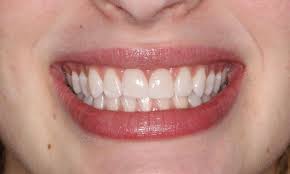Have you ever wondered what options are available to cover missing teeth? It’s a common concern, but fortunately, modern dentistry offers several reliable solutions.
This article delves into the types of dental restorations available to fill those gaps in your smile. From traditional methods to contemporary solutions, we’ll explore the benefits and drawbacks of each to help you make an informed decision. Because everyone deserves a full, confident smile.
Dental Implant
Dental implants have become a preferred solution for covering missing teeth. They consist of a titanium post implanted into the jawbone, topped with a crown that mimics the appearance of natural teeth. Implants are renowned for their durability and the ability to preserve jawbone health.
That said, dental implants are not without their cons. The procedure is invasive, requires multiple visits over several months, and can be costlier than other options.
However, for those seeking a long-term solution, the investment may well be worth the benefits. If you are seeking a reliable option for tooth replacement, consider this top dental Implants provider.
Dental Bridge
When it comes to dental bridges, think of them as a literal bridge over a gap. They use adjacent teeth as anchors to hold a false tooth in place. This is a tried-and-true method for replacing one or more missing teeth, blending seamlessly into your dental arch.
However, dental bridges may require the alteration of adjacent healthy teeth, which could be a deterrent for some. Additionally, they may have less longevity compared to implants and need to be replaced every 5 to 15 years, depending on care and wear.
Denture
Dentures are a well-known dental restoration that dates back centuries. Modern dentures can be partial to replace a few missing teeth or full to replace an entire set, they are customized to fit comfortably and look natural.
The downside? They lack the permanence of implants or bridges. They can slip out of place when eating or speaking, which can be inconvenient or embarrassing. Dentures also require daily removal and cleaning, a routine some may find cumbersome.
Dental Veneer
Dental veneers, while typically used for aesthetic improvements, can also serve as a restoration for certain types of missing teeth. Veneers are thin porcelain shells that attach to the front of teeth, creating a flawless appearance.
Veneers might not be suitable for cases of complete tooth loss but can be used effectively for superficial imperfections. They are less invasive than implants or bridges, yet they still require a portion of the tooth enamel to be removed and can be costly.
Dental Restorations Cover Missing Teeth With Flair
Your smile reflects your personality, and it’s essential to take care of it. Whether you opt for dental implants, bridges, dentures, or veneers, each option offers unique advantages to cover missing teeth effectively.
Consider your lifestyle, budget, and dental health when making a choice. Remember, advancements in dental restoration are continually evolving, so consult with your dentist for the most up-to-date advice tailored to your needs. Here’s to a healthier, brighter smile that lasts a lifetime!
Did you learn something new from this article? If so, be sure to check out our blog for more educational content.






Add comment